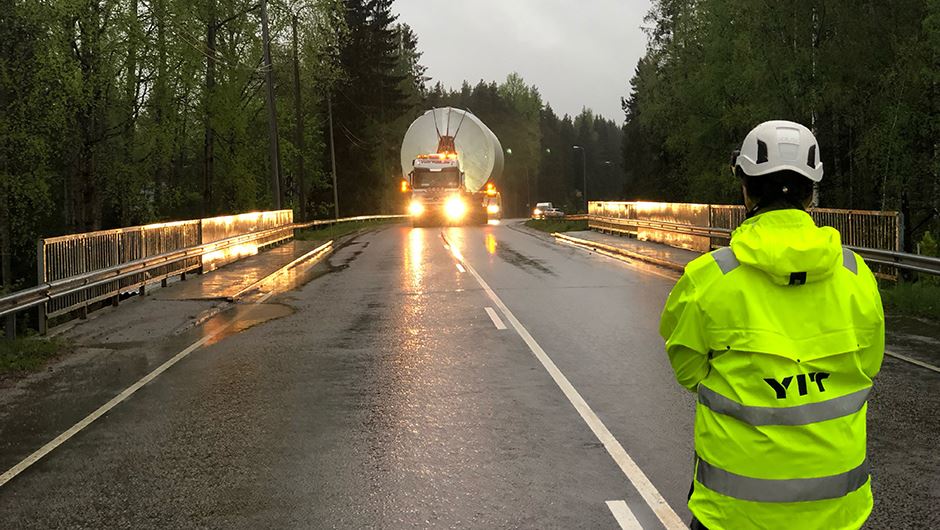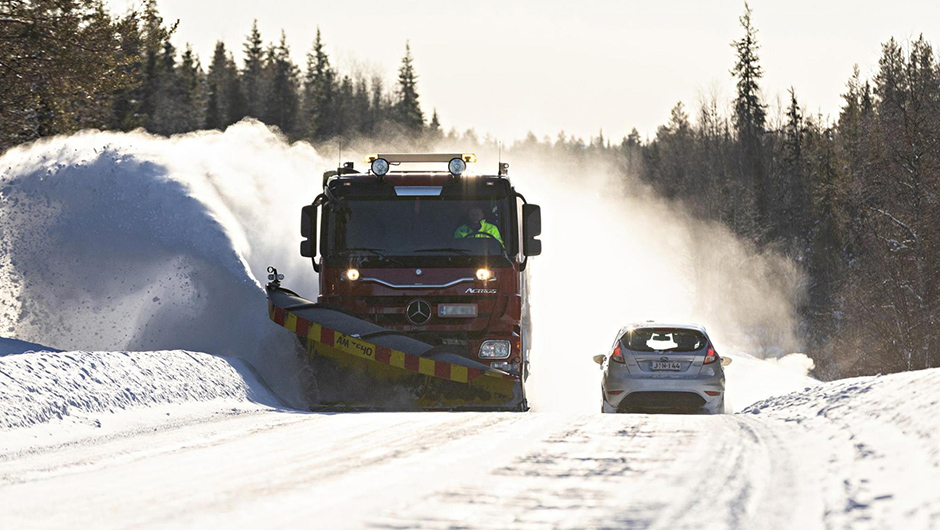Environmental construction emphasises biodiversity
- Traffic
- Maintenance
- 4/20/2023
Roadwork again? 10 facts about road maintenance
Road maintenance leads to further discussion every season and year after year. Timo Paavilainen, YIT Technical Director for maintenance, answers the most common questions.

How to drive safely in traffic with road maintenance equipment? What kind of feedback does YIT receive about the work? Why are roadsides being mowed? We have compiled answers to the ten most common questions about maintenance.
1. On what issues does YIT’s road maintenance unit receive the most feedback?
Most of the feedback received by YIT’s road maintenance unit concerns winter maintenance. Many feedback providers point out that the roads have not been cleared of snow or that a road section is slippery. Often the reason for feedback about snow removal or slippery roads is due to changing weather conditions. When a big blizzard hits, snow clearing is already in progress, but we cannot get to all of it instantly. If we receive feedback about slipperiness, we will check the situation on site and take action as necessary.
2. What are the themes recurring in the feedback year after year?
In addition to winter maintenance, the various seasons play an important role. In spring, we might receive feedback about slipperiness and dustiness during the same week. Sand should be removed as soon as the ice melts – especially if the air is very dry and street dust is prevalent in the air. Gravel roads, in turn, easily develop frost damage.
Various types of pavement damage also increase the feedback throughout the year, year after year. The amount of pavement damage is unlikely to decrease in the next few years, as a record small amount of money has been allocated to the replacement of public road pavements for next year. Even though we at YIT only carry out acute emergency road patches, the situation will certainly be reflected on us as well.
3. How do seasons affect maintenance work?
Working in summer is much more predictable than in winter. Heavy rains and storms occur in summer too, and they may cause trees to fall across roads or roads to collapse. In winter, changes in the weather must be reacted to immediately. It is the weather that determines whether we do snow removal, slippery prevention or other pre-planned work. The amount and quality of customer feedback also varies according to the season and weather.
If the onset of winter is delayed, gravel roads may suffer from surface frost damage in autumn. In autumn, the leaves of trees also cause additional work.

4. How to ensure safety in maintenance?
Road maintenance easily heats people’s emotions up, and so sometimes those who are giving feedback exaggerate things. Luckily, even an angry caller often eventually calms down on the phone, although sometimes we even have to contact the police. Therefore, our phone numbers are mostly secret and feedback is sent to sites via other channels.
Safety needs to be addressed everywhere in this field in any case. We work among other traffic, so we need to ensure not only our own safety, but also the safety of other road users.
We make sure that we are noticed in traffic. There are strict requirements for vehicles as to what kind of warning lamps and tapes must be used in maintenance. Traffic control and other safety plans often take up as much working time as the actual road work. However, this is highly important in order to make maintenance safe for everyone.
We strive to be pioneers in safety matters, in general. We were the first in the Helsinki Metropolitan Area to introduce an impact attenuator to prevent personal injuries in the event of a collision between road users and road work vehicles. Since then, the use of an impact attenuator has become a requirement on all busy roads.
5. How does maintenance take sustainability into account?
In its maintenance contracts, YIT has precise requirements for the emissions and age of the equipment. In addition, we have started to calculate the carbon footprint of our maintenance work on our own initiative. We use new environmentally friendly materials whenever possible.
We are currently testing a new kind of innovation in road dust binding with a pilot programme. We test dust prevention on gravel roads and gravel surfaces using circular economy methods without chemicals.
6. How does maintenance ensure that the work causes as little inconvenience to road users as possible?
Planning maintenance work plays a key role in this. Among others, only compulsory winter maintenance is performed on busy roads during peak hours. Other maintenance work is always scheduled for the less busy hours of the day. Summer evenings are long and bright, so many jobs are scheduled for the evenings and even nights.
Our equipment, such as snow ploughs, makes room for other road users whenever possible. It is not a big effort for the snow plough to move to a bus stop for a while so that the rest of the traffic can pass by.
7. Why is feedback important for maintenance?
Feedback is very important to us because at best it can even prevent accidents. If a sudden hole appears on the road or a sofa has fallen on the highway, for example, we will immediately go to the site to take care of the situation. This way, the roads remain safer.
We also react to non-urgent feedback. If we receive a notification about slipperiness, we will check the situation on site as soon as possible.
8. How should maintenance equipment be taken into consideration in traffic?
First and foremost, maintenance work requires patience. Vehicles engaged in road work and snow ploughs, for example, should not be overtaken. Every winter, there are situations in which the driver is in a hurry and collides with the plough or the rear of the snow plough vehicle while overtaking. In traffic, it is good to keep in mind that ploughing equipment and other maintenance equipment are there to make roads safer and more comfortable for you to drive. Unnecessary overtaking and dangerous situations should be avoided.
9. What kind of challenges does roadside litter pose to maintenance?
The rubbish dumped on the roadsides generally does not endanger road safety as such – as long it does not drift onto the road. Above all, rubbish causes aesthetic harm and extra work for us. In addition to the most common cardboard trash and coffee cups, there are also pieces of tyre along the roads. Occasionally, goods that have accidentally dropped from a vehicle’s load end up on the side of the road. We clean up the rubbish in spring when the snow has melted.
10. Why does maintenance keep roadside vegetation low?
A field of flowers on the roadside could be a beautiful sight, but for safety reasons, we keep the vegetation on the roadside low. If the vegetation grows high, it is difficult to detect animals moving along the roadside.
How wide a strip of road is mowed or cleared depends on the road category. On motorways, the vegetation is often kept low until the elk fence and it is mowed down a couple of times in summer. On ordinary roads, vegetation is mowed over a distance of couple of metres from the road once each summer.



